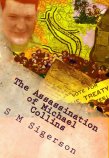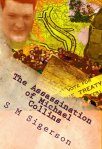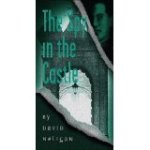Discussions about the history of Ireland tend to be fraught with political debate. Sometimes with moral debate; sometimes with politics masquerading as moral debate. While killings before 1922 by the British Empire in Ireland are rarely questioned, any corresponding blows struck by Irish forces seem to awaken an agonized conscience, from quite unexpected quarters. “The Squad” is one of the hottest topics of this kind: Michael Collins’ elite unit for executing secretive “spies and informers” of a violent foreign occupation force.
Along with Liam Tobin and Tom Cullen, Frank Thornton was the third in Collins’ innermost team of associates at GHQ. While the shooters themselves may have understood the reasons for any particular “job” in only a general sense, Thornton avers that each order had to be confirmed by a Joint meeting of the Dáil Cabinet.
The following excerpt from his 60-page Witness Statement (No. 0615), Bureau of Military History, bids fair to allay any ambiguity about how the Squad’s targets were chosen: .
“The British at this time, realising that the terrorism of the Black an’Tans’ burning and looting was not going to succeed unless they could actually put their finger on our Headquarters Staff and eliminate us in that way. With that end in view they aimed to set up a full time Secret Service outside of the army, working on proper continental Lines with a Central Headquarters and other houses forming minor centres scattered all throughout the city in which they operated…
“I had the honour to be in charge of that particular job of compiling all that information and got the very unenvious job of presenting my full report to a Joint meeting of the Dáll Cabinet and Army Council, at which meeting I had to prove that each and every man on my list was an accredited Secret Serviceman of the British Government. This, as everybody can realise, was not an easy task, but proves one thing: that is, that our Government and our Army were not going to allow any man to be shot without the fullest possible proof being produced of his guilt. Our men have been referred to as the “murder gang” from time to time by our enemy, but I can assure you that whether in the Brigades throughout the country or here in Dublin, no man was ever shot during the Tan War except in an open fight and a fair fight, unless he had first received the benefit of a full court-martial. Very often as you know it was not possible to have the man present at his own court martial, but what I mean to convey is that the proof had to be absolutely a full 100% watertight before any action could be taken.”
You can read more of Thornton’s fascinating inside story of Michael Collins’ GHQ operations throughout the War of Independence here:
Frank Thornton’s Witness Statement in full – Bureau of Military History
Read more
“The Assassination of Michael Collins:
What Happened At Béal na mBláth?”
by S M Sigerson
Paperback or Kindle edition here:
www.amazon.com/dp/1493784714
All other e-reader formats:
www.smashwords.com/books/view/433954
Read reviews:
http://www.rabidreaders.com/2014/12/03/assassination-michael-collins-s-m-sigerson-2/










